Type City, bar name or keyword...
The Ultimate Guide To Mastiha
Planning a Greek island holiday? If you prop up a beach bar or feast at a taverna on your travels, there's a chance you'll knock back a glass or four of mastiha (say it with us: "mahs-TEE-kuh").
Haven't heard of the stuff? Don't sweat it, babe. While mastiha has a loyal following in its home country of Greece, it ain't exactly the Regina George of the international spirits scene. Still, with its wicked centuries-long history, uniquely delicious flavour and growing presence on the back bars of the world's hottest drinking dens, mastiha should be on your radar - and we're here to help you swot up.
Since we're not the type to do things by halves, we packed some SPF 50 and headed to Greece with the squad from Axia Spirit to learn firsthand about the mastiha-making process, and how they're giving this botanical booze a serious upgrade...
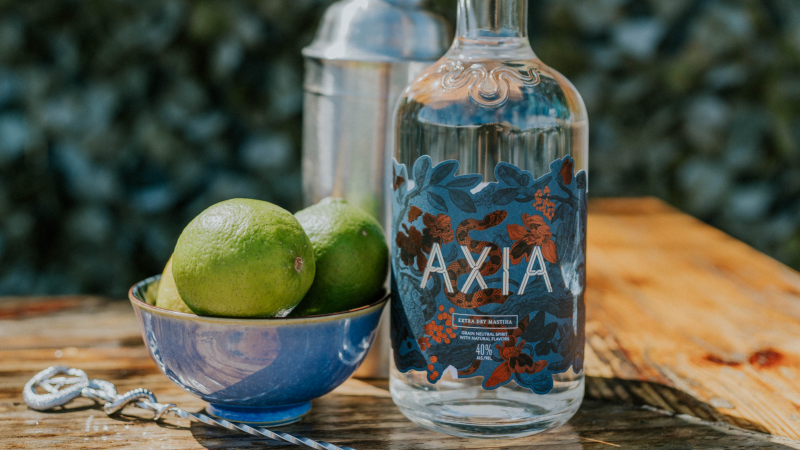
WTF is mastiha?
First, let's break down the basics: mastiha is a traditional liqueur hailing from the island of Chios in Greece. It's flavoured with mastic crystals, AKA the hardened resin of the mastic tree Pistacia lentiscus (which is technically an evergreen shrub that's been trained to grow in a tree-like way - no small feat!).
These trees grow all around the Mediterranean, but only the ones in southern Chios produce mastic resin. That's because of the island's unique microclimate. Yup, this place is so special, it even has a Protected Designation of Origin (PDO) like Champagne and Cognac - only mastic resin cultivated in one of the island's 24 mastiha villages can legally be labelled "Chios mastiha". It's kinda a big deal...
While each brand of mastiha varies massively in flavour, sweetness and overall quality, you can generally expect an earthy, piney, fresh profile from those mastic crystals. In Greece, mastiha is often served chilled as a cheeky after-dinner drink, and it pops up on cocktail menus round the country too.
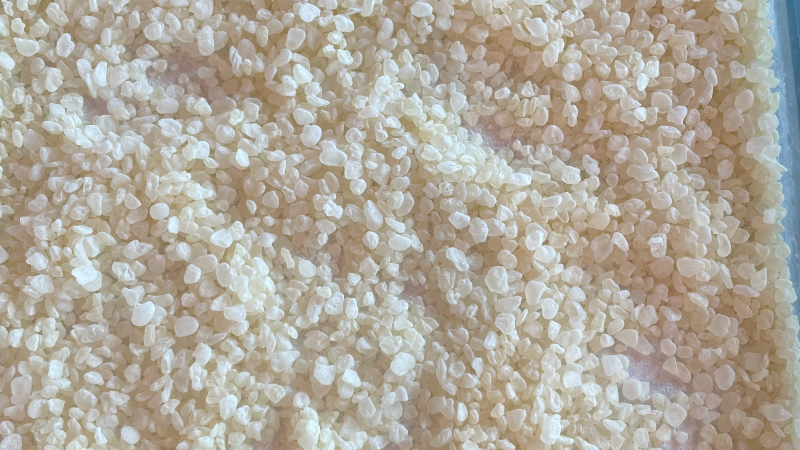
Mastic crystals
An epic history
The cultivation of mastic trees on Chios goes all the way back to the days of the ancient Greeks, who treasured the resin for its medicinal properties and distinctive flavour - and also used it as the OG chewing gum (fun fact: the word "mastic" comes from the Greek "mastichon", meaning "to chew").
Turns out, mastic's limited supply and its many uses made it valuable stuff! Throughout the centuries, as Chios came under the rule of empire after empire (Roman, Byzantine, Genoese and Ottoman, if you're asking), castles were constructed around the island's mastic-producing villages, wars were fought, and governments were toppled, all in the name of this unique resin. During certain periods, mastic held so much power and wealth that its producers didn't even have to pay taxes like normal peeps (Rishi, are ya taking notes?).
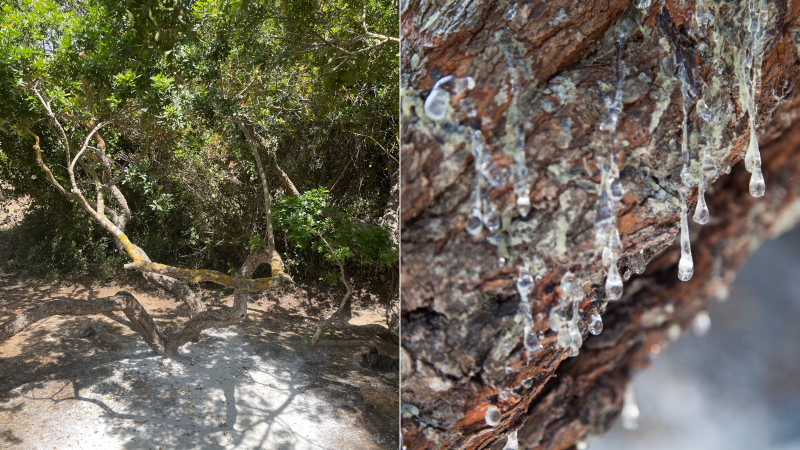
The mastic tree and its resin
Today mastic resin is exported around the world through the Chios Mastiha Growers Association. It's used in everything from toothpaste, to cosmetics, to cooking (don't sleep on mastic ice cream) and most importantly - in BarChick's opinion, at least - spirits production.
How it’s made: from grove to glass
Since the resin of the mastic tree is the key ingredient in mastiha, we gotta start in the groves where these plants grow.
One of the reasons mastic resin is so valuable is because cultivating this stuff is hard work, all year round. Towards the beginning of the year, farming families (yup, this is a family affair) plant new trees from cuttings and meticulously prune them. In July, the harvest begins. Farmers prep the area around each tree by clearing the ground and scattering white calcium carbonate powder on the soil - this is v important, 'cos it makes it easier to collect the resin later.
Next it's time to get up close and personal with each tree. Using a blade, farmers make tiny cuts or "wounds" in the bark. The mastic resin flows to these cuts and forms droplets on the surface of the tree (sometimes called the "tears of Chios" - poetic, no?). The droplets harden, crystallise and are scraped off onto the ground.
The mastic crystals are collected, along with some of the soil, twigs and other matter hanging out around the tree... which means there's A LOT of sorting and cleaning to be done. Family members, traditionally women, take on the laborious task of sifting through all the tiny crystals, washing them and making sure they're as pure as possible. Then they're taken to the Growers Association to be sorted by size, cleaned again and eventually turned into loadsa different mastic-based products.
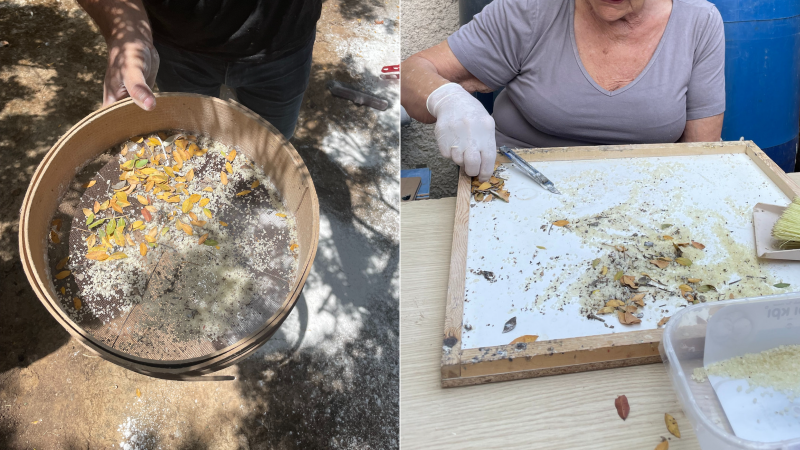
Sifting and cleaning
Now for the fun part - making the mastic into mastiha! There are a few ways to do this. According to law, alcohol can either be flavoured with mastic oil or distilled with the crystals themselves. After that, the liquor is diluted with water and sweetened with sugar to form the final liqueur. As we mentioned earlier, this results in products with a huge variety of sweetness levels, alcohol levels and general quality.
Axia: The next generation
And then there's Axia, a brand that's putting its own twist on the mastiha category. Unlike traditional mastihas, which are typically liqueur-sweet, Axia is extra dry. This means that, aside from sipping it straight like a traditional mastiha, you can also mix Axia in cocktails the way you'd use a gin, vodka or tequila. Yup, she's versatile.
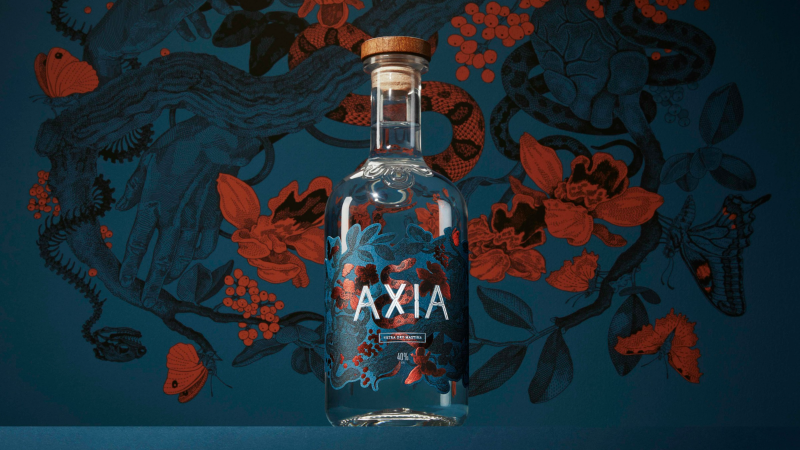
Naturally, it takes a unique process to make a unique mastiha like Axia. At Plomari Distillery in Lesvos, where Axia is produced, the team spent more than two and a half years developing a recipe that fully expresses the flavour of the tears of Chios. It turns out that working with mastic crystals in spirits production is v difficult, 'cos mastic gets sticky when heated - kinda like us in the throes of London summer sans AC.
As Axia's master distiller, Maroussa Tschaki, puts it, "It's a hard material to work with, but I like the challenge. We have done quite a lot of innovative steps in order to work better with the [mastic crystals]."
Though the finer details of the process are a closely guarded secret, Maroussa and her team use the resin in multiple points of production, employing maceration, double distillation in small handmade alembic copper stills, and blending techniques to lend Axia some major mastic flavour. "We have a very, very long process, and it gives the difference in the final product," she says.
Bottles to try & how to use 'em
Axia
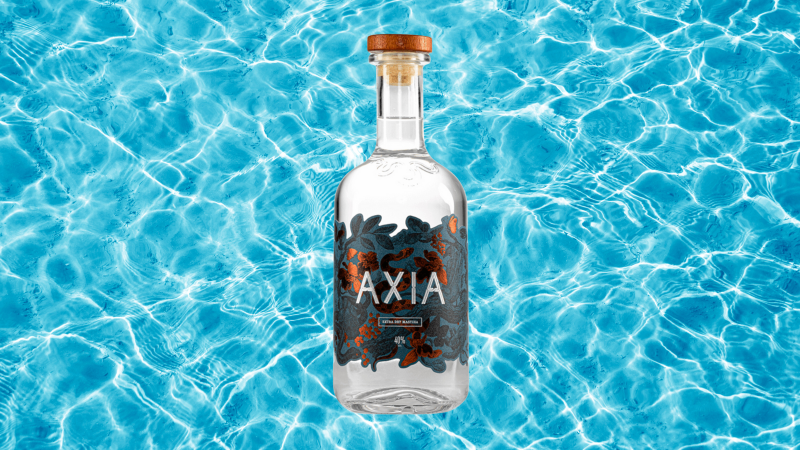
Founded by Adrian Clark, a member of the Bacardi family (yes, that Bacardi family) and Nikos Kalogiannis, a fifth-generation distiller, this liquid forges new ground in the world of mastiha - and it tastes banging too. Expect an earthy, grassy base layer with light sweetness, refreshing vegetal notes of carrot and cucumber, plus some basil, citrus and white pepper, all underscored by nicely bitter resinous streak. Yup, there's a whole lot going on here...
Try it in: an Axia & Tonic - add 50ml Axia to an ice-filled glass and top up with tonic. Garnish with a lemon twist and a sprig of rosemary. This stuff's so good, we like to keep things simple when we drink it... though we can also confirm it slaps in a Paloma.
40% ABV, £32.95, thewhiskyexchange.com
Skinos
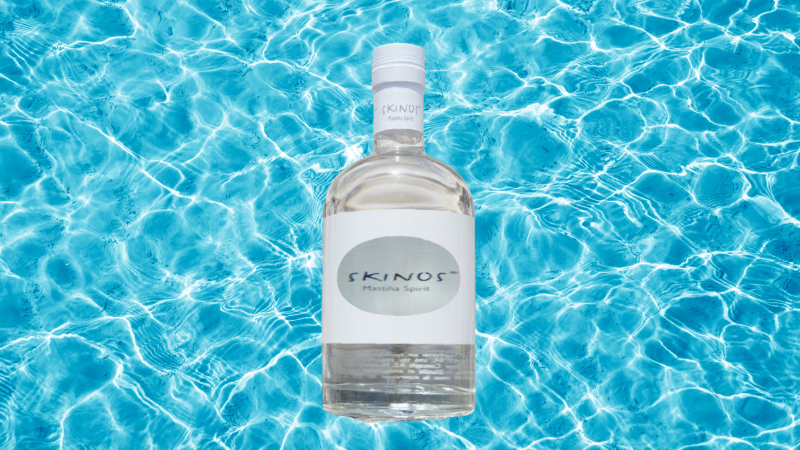
"Skinos" is actually the ancient name for mastiha, and this brand keeps things traditional. Made by distilling mastic resin with neutral spirit and blending the whole thing with sugar, for a fresh, piney liqueur that works a treat in cocktails.
Try it in: the Salty Skin - a briny drink that balances the sweetness of this mastiha liqueur. Combine 60ml Skinos, 15ml fresh lemon juice, 15ml dry white wine and a pinch of salt in a highball glass over ice and stir. Top up with soda water and garnish with two olives.
30% ABV, £30.94, masterofmalt.com
Roots
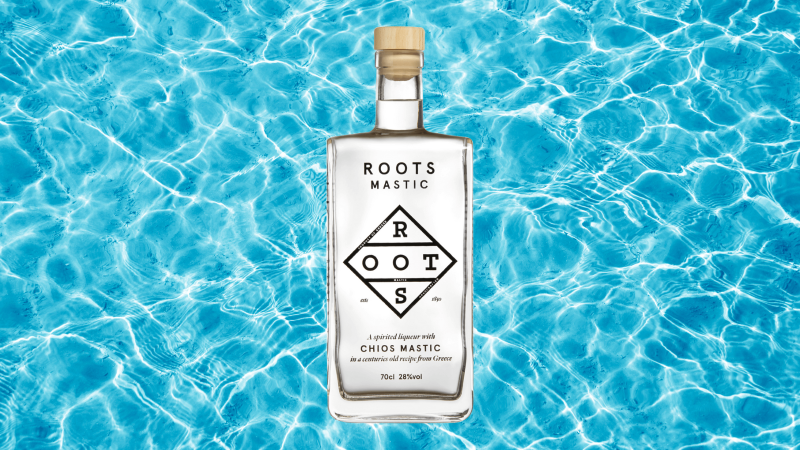
Syrupy sweet and clean, with signature mastiha bitterness. Really wanna take the mastic flavour up to 10? Try Roots' Vintage Strength bottling, a liqueur that uses a greater proportion of mastic and has a higher ABV, at 40%.
Try it in: a Roots Spritz - sweet, fresh and summery. In a wine glass filled with ice, add 50ml Roots and 30ml Aperol. Top up with elderflower tonic. Pow!
28% ABV, £28.75, thewhiskyexchange.com
05/07/2023